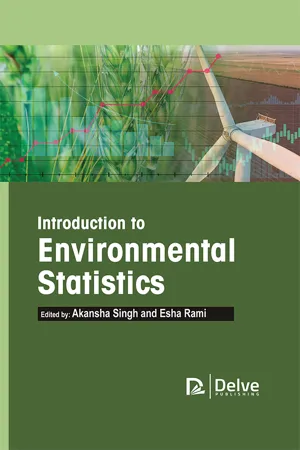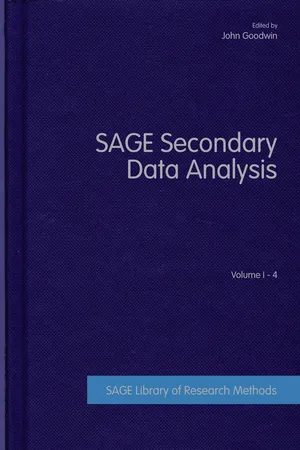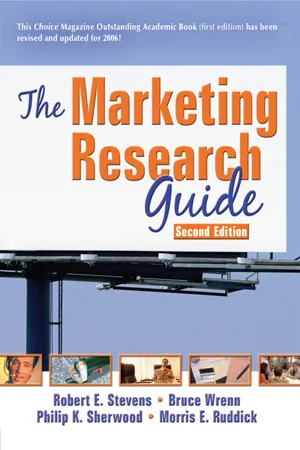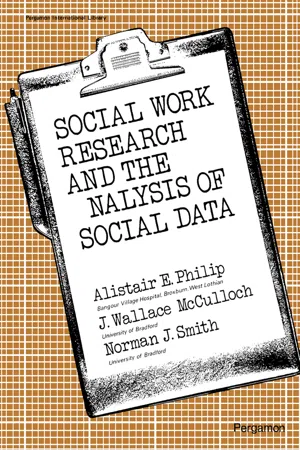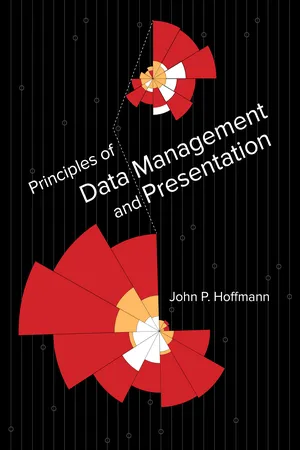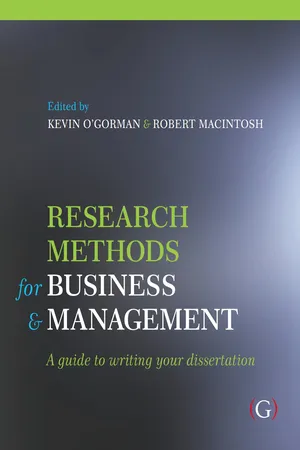Social Sciences
Sources of Data
Sources of data in social sciences refer to the various methods used to gather information for research and analysis. These sources can include primary data collected through surveys, interviews, or observations, as well as secondary data obtained from existing sources such as government reports, academic journals, and historical records. The choice of data sources can significantly impact the quality and validity of social science research.
Written by Perlego with AI-assistance
Related key terms
1 of 5
12 Key excerpts on "Sources of Data"
- eBook - PDF
- Akansha Singh, Esha Rami, Akansha Singh, Esha Rami(Authors)
- 2023(Publication Date)
- Delve Publishing(Publisher)
It simply means what it says: where the data is coming from. Data is the foundation of any data analysis jobs completed during the research process. Data analysis and interpretation are based solely on the collection of various data sources. Data refers to unorganized statistical facts and figures gathered from various sources. The researcher or analyst collects data in order to gather information (Kandlikar et al., 2018). Data sources can differ based on the need for data for the research project. Types of Data Sources 99 The type of data also has an impact on data collection. All data is classified into two types: primary and secondary data. Both kinds of data are gathered from various data sources. The sources are trustworthy and broadly used for gathering specialized data about the research project. 5.1. WHAT ARE Sources of Data? Data analysis begins with gathering all Sources of Data, either through primary or secondary research. The collection of statistical facts and figures or non-statistical figures gathered by the researcher or analysts to further process the research work is referred to as a data source. Data sources are primarily of two types: • Sources of statistical data; and • Sources of census data. Both data sources are widely used by researchers in their research. Primary or secondary research methods are used to collect data from these data sources. 5.2. TYPES OF DATA SOURCES Both data sources are common in the research field. It is effective at gathering information (Figure 5.1). Figure 5.1. Types of data sources. Source: https://www.marketing91.com/sources-of-data/. Introduction to Environmental Statistics 100 5.2.1. Statistical Data Sources Statistical data sources are data sources used for official purposes such as surveys and other statistical reports. Data is collected by asking respondents a series of questions, which can be qualitative or quantitative. - eBook - PDF
- John Goodwin(Author)
- 2012(Publication Date)
- SAGE Publications Ltd(Publisher)
Section 1: Secondary Data This section reviews documentary and archival Sources of Data and their usefulness for various types of urban research projects (see Murphy, 1980; Salant, 1990). Secondary data are useful at all levels of analysis. This sec-tion begins with a review of data sources from the national, state, and local levels of government that focus on or provide important information for urban research. Next, harder-to-find or fugitive sources are discussed. This section concludes with a checklist for using secondary data sources. Source Questions in Collecting Data What constitutes data? Data sources include persons, places, things, events, and outcomes (see Box 1). Data can come from process (e.g., policy mak-ing or community involvement) or substance (e.g., housing, education, or crime). In short, anything and everything can be considered as a source for data. Because of the vast array of available and fairly accessible published and unpublished data, it is easy to feel swamped. If you have a clear sense of why you need data (that is, a good theoretical formulation of the problem and research design), you can more easily chart a course through the many data sources and resources that are available. You might find that using second-ary sources fits the bill; in many cases, secondary data may be sufficient for your research needs. In other cases, you might discover that there are no data Andranovich and Riposa Data Collection in the Urban Setting 131 sources or resources that meet your needs or that existing sources do not pro-vide the angle your research project requires. Often this is true of exploratory research. In such cases, you need to select a data collection strategy that can be completed within the constraints of your project’s time frame and budget and which conforms to your research design. - eBook - PDF
Postgraduate Research in Business
A Critical Guide
- Sarah Quinton, Teresa Smallbone(Authors)
- 2006(Publication Date)
- SAGE Publications Ltd(Publisher)
Saunders et al. (2003) distinguish three types, which they categorize as documentary, multiple source, and sur-vey data. By documentary, they mean both written documents, such as organizational records and academics’ notes, and non-written materials such as television programmes. They distinguish all this from survey data, which is the published, or at least accessible, Sources of Secondary Information How Do I Know If I Should Include It? 5 results of surveys in the form of quantitative, mainly questionnaire-based, studies done by other organizations. A national census is a good example of this. Their final category is what they describe as ‘multiple source data’, which is a mixture of the two, for exam-ple, many government publications and country reports (Saunders et al., 2003). Other authors (for example McGivern, 2003) refer simply to internal Sources of Data and external sources. This is really only relevant for an MBA or DMS student who is doing research in their own organization and so has excellent access to internal Sources of Data such as company records and in-house databases. Secondary data in this context can include any data the company has collected. That might include accounting information, sales data and figures on returned goods, sales force data, personnel records, electronic point of sale data, and other management information that has been systematically col-lected in the course of doing business. It can be a really valuable source of information. Analysing the records made by salespeople, of who and where they visited and what these particular customers ordered, can reveal fascinating and revealing insights into how customers perceive that particular company. Personnel records, if access to them is possible, can provide revealing data on a range of human resource issues. - eBook - ePub
- Robert E Stevens, David L Loudon, Morris E Ruddick, Bruce Wrenn, Philip K Sherwood(Authors)
- 2012(Publication Date)
- Routledge(Publisher)
Chapter 5 Introduction to Data Collection In previous chapters we have discussed how to translate a management problem into a research purpose and objectives, use the research objectives to formulate a research design, and how the research design permits measurement of variables of interest to us. No matter whether the research design is exploratory, descriptive, or causal, its basic purpose will be to gather useful information that can be classified, compared, and analyzed in order to solve the original problem that initiated the research process. Data analysis and interpretation will be discussed in Chapter 9. That chapter will deal with the process of taking the mass of raw data generated by the data-collection process, and show how to analyze it in a way that answers the research questions. This chapter will deal specifically with the various types of data, the Sources of Data, the methods of data collection, and the procedures and tactics of data collection. Sources of Data There is a wide variety of data sources that should be considered when seeking answers to the research questions under consideration. In order to focus quickly on the pertinent data relative to the research questions, researchers and decision makers alike should be familiar with the basic sources of information. This will ensure that time and money is not wasted in misdirected search for either unavailable or irrelevant information. TYPES OF DATA Generally, data are classified by being either primary data or secondary data. Primary data are those data that are collected for the first time by the researcher for the specific research project at hand. Secondary data are data previously gathered for some other purpose. The terms “primary” and “secondary” may cause some confusion. These terms have nothing to do with the relative importance of the information - eBook - PDF
Social Work Research and the Analysis of Social Data
Social Work Division
- A. E. Philip, J. W. McCulloch, N. J. Smith, Jean P. Nursten(Authors)
- 2014(Publication Date)
- Pergamon(Publisher)
CHAPTER 4 Sources of Information in Applied Social Studies' THIS chapter outlines some of the categories of publications within the area of applied social studies which are at present available for all who need them. The problem of unpublished information—correspondence, statistical data, case books, histories and interviews—awaits separate treatment. The chapter concludes with a description of the sequence of steps which should be undertaken by anyone seeking to discover what is the present state of knowledge within a particular topic. Guides to the Literature of the Social Sciences and Psychology With the great rise in research activity, notably during the present century, the literature of all subjects has increased tremendously. The growth rate has been shown to be exponential, and in some areas of social work leads to a doubling of the available literature twice in a decade! As it grows, it becomes more complex. Because few subjects are now restricted by national boundaries, an awareness of what has been published in other countries is necessary. Introductory guides to the literature of certain subjects—notably some scientific ones—have been available for a considerable time, but in recent years such guides have been published on many topics for the first time. Many of these are separately published as books; some are produced by librarians, whilst others are the work of practitioners in their own fields. Apart from those separately published, brief guides appear from time to time in the professional journals. They usually cover a wide range of * This chapter was contributed by C. A. Crossley, a librarian at the University of Bradford. 4 7 48 Social Work Research sources of information within a subject, including notes on relevant libraries, societies, periodicals, indexes and abstracts, handbooks, reviews, data books, bibliographies, standard books, encyclopaedias and dictionaries, theses, biographical information, research associations, as appropriate. - Dr. John P. Hoffmann(Author)
- 2017(Publication Date)
- University of California Press(Publisher)
As mentioned in chapter 3, there are many different types of data and data sources. Recall that secondary sources are materials that someone else has collected or produced. For FIVE Finding and Using Secondary Data 90 Finding and Using Secondary Data example, when a research team organizes and administers a survey and prepares the resulting data for analysis, but then makes a dataset available for others to use, this is considered a secondary source and is a common example of secondary data. Secondary data can be used to (re)examine the findings of the study for which the data were originally collected, extend them by considering additional variables or modeling strategies, or inves-tigate new research questions and hypotheses (Greenhoot and Dowsett 2012). It is clear that secondary data are a valuable source of evidence in the social and behavioral sciences. Yet, even though some research methods books include chapters on secondary data (see, e.g., O’Leary 2014; Remler and Van Ryzin 2015), it is rare to find examples of how to locate and use this type of data to answer one’s research questions. Thus, the main concern of this chapter is to learn about some sources of secondary datasets and consider how to use them in a research project. This includes issues such as locating, accessing, evaluating, and managing secondary datasets, as well as thinking through some key decisions about the analysis. TYPES OF SECONDARY DATA In addition to survey data that were collected by someone else, secondary data may also be classified into the following types: • Offi cial data, such as government or quasi-governmental information, cross-national data collected by international organizations such as the World Health Organization, and data published by private and nonprofit organizations. These fall under the general category of administrative data (see chapter 6).- Gary S. Elbow, Martha B. Sharma(Authors)
- 2000(Publication Date)
- Libraries Unlimited(Publisher)
2 Primary Sources for Geographers Geography is related to many other fields of study. These fields include sciences such as geology, meteorology, soil science, biology and hydrol- ogy, which most often are part of the study of physical geography. Hu- man geographers use data and concepts from social sciences such as economics, anthropology, linguistics, political science, psychology, and sociology as well as material from humanities disciplines such as history, languages, and literature. Because of its diversity geography depends on an extremely wide array of data sources to describe different parts of the world, to identify relationships among different parts of Earth, and to explain the processes that account for where things are and why they occur as they do. Data sources are often placed in the following cate- gories: primary, original, or secondary. PRIMARY SOURCES, ORIGINAL SOURCES, AND SECONDARY SOURCES Primary data sources used by geographers (Table 2.1) may be written in narrative form as notes, diaries, or other accounts of important events or processes, they may be handdrawn field maps or published base maps, or they may be quantitative information such as census counts or temperature and precipitation data. Audio or video recordings, photo- graphs, and digitized data from remote sensing can also be primary data. The thing that makes the data useful for geographers is that it tells us something about Earth and its human population. Primary sources need not be original, but they should have been carefully compiled or pre-- eBook - PDF
Marketing Research N6 SB
TVET FIRST
- R van der Merwe(Author)
- 2019(Publication Date)
- Macmillan(Publisher)
Table 3.1: A typical data table Individual Question 1 Question 2 Question 3 Question 4 % of total A 5 19 M Indian 20% B 5 23 M Coloured 20% C 5 20 F Coloured 20% D 5 21 M Black 20% E 5 19 F Black 20% In Figure 3.1, the source of the data, or the sample, is your classmates. If you ask your classmates each of the questions in Activity 3.1, you will collect data. But data only becomes meaningful once it is turned into information. You can turn data into information by representing it as follows: • The total sample consisted of five individuals. • 60% of the sample are male and 40% are female. • 40% are coloured, 40% are black and 20% are Indian. • There are no white students in this sample (a deduction made from the data). • The age range for this sample is 19 to 23 years. In the research process, researchers can use different types of data. Researchers need to know about the different types of data, and the different data sources. As you saw in Module 2, there are two main Sources of Data: secondary and primary sources. Figure 3.2 shows the characteristics of primary and secondary data. Sources of information TVET FIRST 49 Figure 3.2: Comparison of primary and secondary data Secondary sources Definition of secondary data In Module 2, you saw that secondary data is data that has been collected by someone other than the researcher who is using it. Secondary data is not always entirely relevant to the current problem or study, but this does not mean that it cannot be useful. This kind of data can be available from an internal information system. Researchers can also source it from outside the organisation. Before researchers start designing a process of collecting primary data, they always determine whether there is relevant and useful secondary data currently available. According to Martins et al. (1996:100), secondary data is most useful in: • Formulating the research problem. • Suggesting the methods for collecting the required data. - Emily F. Calhoun(Author)
- 1994(Publication Date)
- ASCD(Publisher)
2. Conventional Sources. Conventional Sources of Data are items that require communication, observation, or follow-up with members of the population and that often require instrumentation to standardize the information collected. Therefore, the collection of data from these sources requires the selection or development of data-collection instruments. Examples of conventional data sources are surveys, interviews, observations, samples of student work, journals, and logs of performance. Information from these sources can be easily acquired and organized in a brief span of time. With existing data sources, we gather information from school archives and staff records; with conventional data sources, we gather information directly from individuals, from samples of their work, and from documents that require study. We seek information from these sources when we want to know more about the behaviors and attitudes of students in our area of interest. When you are developing your action plan and its data-collection schedule, you want to include a balance of behavioral and perceptual data sources. Behavioral data sources provide the faculty with information about what a person is doing or has done. Behavioral sources include P HASE 2: C OLLECTING D ATA 55 logs that indicate the number of books students have read; samples of student writing; observations of students at work; and, for the faculty, logs of types of writing elicited, samples of lessons, and descriptions of how concepts are presented. Perceptual sources provide the faculty with information about the feelings, opinions, and values of a person. Perceptual sources include surveys, questionnaires, and interviews. Avoid overreliance on perceptual data sources . I am addressing the overuse of surveys and attitudinal measures specifically because it is so common.- eBook - PDF
Research Methods for Business and Management
a guide to writing your dissertation
- Kevin D O'Gorman, Robert MacIntosh(Authors)
- 2014(Publication Date)
- Goodfellow Publishers(Publisher)
As such, they provide a great source for historical research, offering a lens through which to analyse not only the source itself but those who made it and those whom it was made for. Summary The above section outlines briefly the considerations surrounding utilising historical sources in your research. Using these sources opens your research project to a vast contextual and theoretical field which may not otherwise be accessible and can add extra depth and meaning to your research. The following section outlines a much more contemporary, but also vast, quali -tative data source. Online research: Using the Internet and social media The focus of this section is on how the Internet and social media can be used to gather both primary and secondary data to answer many (if not all) of your research questions. The Internet The Internet is a medium of communication that is not new for the majority of the readers of this book, most of whom will have grown up surrounded by it. However the history of the Internet is relatively short as outlined in Figure 6.1. The Internet as a research tool As illustrated in Figure 6.1, the Internet has become a very important part of our daily lives, with over a quarter of the population having an Internet connection and an even higher proportion of users. For instance in the UK, Internet penetration is 83% according to Internet World Stats (2012). This makes the Internet a very powerful and relatively accessible way to conduct both primary and secondary research. To understand the potential of this medium, we will discuss the advantages and disadvantages of using this communication tool when conducting research. Research Methods for Business and Management 102 Figure 6.1: A brief history of the Internet 103 6 Working with Historical and Contemporary Data Sources Advantages of using the Internet The Internet has made empirical research easier. - eBook - PDF
A Handbook for Social Science Field Research
Essays & Bibliographic Sources on Research Design and Methods
- Ellen Perecman, Sara R. Curran(Authors)
- 2006(Publication Date)
- SAGE Publications, Inc(Publisher)
6 Surveys and Secondary Data Sources Using Survey Data in Social Science Research in Developing Countries Albert Park T he goal of this chapter is to introduce some of the major issues related to the use of survey data in social science research in developing countries. I will not address all aspects of survey research; nor will my treat-ment of the issues selected be comprehensive. Rather, my intention is to pro-vide a broad roadmap of important issues to be addressed so that scholars embarking on field research in developing countries can think more system-atically about (a) the potential value of quantitative data in research design, (b) how to find and use survey data collected by others, (c) when and how to conduct one’s own survey, and (d) how to best utilize survey data in one’s analysis. My insights are drawn from my own field research experiences as an economist, primarily in China, and come disproportionately from studies of economic development. Nonetheless, the main points are relevant to social scientists in other fields as well. One of my goals is to provide advice I wish I had been given at an earlier stage in my career, even though I am quite sure that many lessons can be learned only through firsthand experience. 117 Quantitative Data in Research Design Ever since Charles Booth (1889) first attempted to measure poverty among the working class in England at the end of the 19th century, there has developed a rich tradition of quantitative data analysis to answer empirical questions in the social sciences. The great advantage of survey data is that they facilitate quantitative analysis that allows for generalization to an entire population. This ability to generalize relies on the very powerful properties of sampling and statistical theory. - Allen Rubin, Earl Babbie(Authors)
- 2021(Publication Date)
- Cengage Learning EMEA(Publisher)
Its disadvantages are that it is limited to recorded communications and can raise issues of reliability and validity. • Social work researchers also use historical and comparative methods to discover common pat-terns that recur in different times and places. Two broad types of source materials for histor-ical research are primary sources and secondary sources. • Primary sources provide firsthand accounts by someone who was present at an event — for example, diaries, letters, organizational bylaws, the minutes of a meeting, the orally reported memory of an eyewitness, and so on. Secondary sources describe past phenomena based on pri-mary sources. • A danger in working exclusively with secondary sources is that you may merely repeat the mis-takes contained in those sources and fail to give yourself the opportunity to provide a new, inde-pendent perspective on past events. But primary sources can be flawed as well. For example, an eyewitness could have been biased or may expe-rience faulty memory. • When conducting historical research, you should try not to rely on a single source or on one type of source. Your protection against dangers in using primary and secondary sources lies in corroboration. If several sources point to the same set of “ facts, ” then your confidence in them might reasonably increase. Hermeneutics refers to interpreting social life by mentally tak-ing on the circumstances, views, and feelings of the participants. • An ideal type is a conceptual model that is com-posed of the essential qualities of a social phenomenon. • The rise of social media has opened new ave-nues for unobtrusive social research. REVIEW QUESTIONS AND EXERCISES 1. In two or three paragraphs, outline a content analysis design to determine whether the Repub-lican Party or the Democratic Party is more sup-portive of public spending on social welfare. Be sure to specify sampling methods and the rele-vant measurements.
Index pages curate the most relevant extracts from our library of academic textbooks. They’ve been created using an in-house natural language model (NLM), each adding context and meaning to key research topics.
